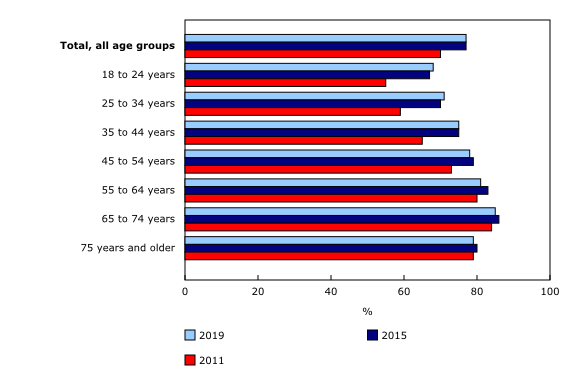Multicultural Film Fund AUM Group Is Here to Empower Creatives of Color and Save Hollywood From Itself
2020/02/28 Leave a comment
Of note:
For creators of color, one of the biggest challenges is securing the funding needed to bring our dreams to life. That’s why producer Nina Yang Bongiovi (Fruitvale Station, Dope, Sorry to Bother You) has assembled a super team of film and tech heavyweights to launch the multicultural film fund AUM Group.
Comprised of Bongiovi, Gold House Chairman Bing Che, Twitch Co-Founder Kevin Lin, XRM Media’s Michael Y. Chow, MNM Creative’s Michael K. Shen, and Silicon Valley vets Jason A. Lin and Maggie Hsu, AUM Group will develop and acquire creative IP, finance multicultural motion pictures, and invest in the next generation of storytellers.
“Forest Whitaker and I have been backed by my Asian-American partners in leading the financing on every Significant Productions’ project since Fruitvale Station through Sorry to Bother You when no one else in the marketplace was willing to take the initial risk,” Bongiovi told The Root. “Partnering with an all-star team of business leaders in AUM Group is the next natural evolution in continuing to shift culture, amplify important dialogue, and elevate commercial opportunities.”
AUM Group led the financing of the upcoming suspense-thriller Passing, which stars fan-favorite Tessa Thompson, Ruth Negga and Andre Holland and navigates the complicated intersection of race, class and culture. It’s an adaptation based on the Nella Larsen novel published during the Harlem Renaissance.
For an industry in dire need of more people of color in positions of power in order to exert more control over the content being created, AUM Group is a welcome breath of fresh air. Just last month I wrote about UCLA’s latest Hollywood Diversity Report and…its findings were a bit concerning, to say the least.
But with its producer-led approach and Bongivoi’s track record of launching the careers of several noteworthy filmmakers, AUM Group could create a much-needed paradigm shift in entertainment.
Creatives, get your pitches ready.
And a related article:
With Asian and Asian American actors and filmmakers gaining prominence in Hollywood — the latest example: Parasite and The Farewell winning top honors at the Oscars and Spirit Awards — their counterparts in the executive suites are stepping up as well.
Nina Yang Bongiovi, who runs Forest Whitaker’s Significant Productions, revealed Feb. 24 that she has teamed with a coalition of film and tech veterans including Bing Chen, chairman of the Asian American nonprofit Gold House, and Twitch co-founder Kevin Lin to launch the film fund AUM Group. Although founded by Asian Americans, the fund will back an array of multicultural film projects, starting with Rebecca Hall’s directorial debut, Passing. Now shooting, the drama is an adaptation of Nella Larsen’s 1929 novel about the evolving relationship between light-skinned black women (played by Tessa Thompson and Ruth Negga).
AUM Group’s announcement came four days after Mary Lee, most recently head of film at Justin Lin’s Perfect Storm Entertainment, unveiled her own banner, A-Major Media, which will focus on producing Asian American film and TV content. The company is backed by a non-exclusive majority investment from The Hollywood Reporter parent Valence Media, meaning that Lee is free to shop her projects to various production partners. Financial terms for A-Major and AUM Group were not disclosed.
Yang Bongiovi will continue to run Significant (Sorry to Bother You, Dope, Fruitvale Station), whose future projects will be supported by AUM Group, as could films from other companies — such as A-Major’s. “I’m excited about the fact that Mary could have support from AUM Group,” Yang Bongiovi tells THR. “We’re here to complement each other on our growth and presence in the business.”
A-Major already has a handful of projects on its slate, including an untitled film set up at New Line produced by John Cho and a TV series produced by Gemma Chan and Franklin Leonard. The company also is developing an adaptation of the 2015 YA novel I Believe in a Thing Called Love, about a teenage girl using K-drama techniques to woo her crush; an autobiographical film from Fresh Off the Boat co-executive producer Kourtney Kang about her high school experiences; and We Stan, a comedy about K-pop fans and friends from Atypical scribe Lauren Moon.
Yang Bongiovi and Lee cited 2018’s Crazy Rich Asians as a watershed moment that sparked faith to start their ventures. There have been Asian American studio toppers (including current DC Films chief Walter Hamada) and artists with their own shingles (Daniel Dae Kim’s 3AD), but few producer-driven companies like Dan Lin’s Rideback. That’s changing, Lee says: “[The presence of Asian Americans] has been good on the talent side, but it’s very important to be on the executive side as well. There have to be people in positions of power to champion these stories.”
Source: Asian American Producers Gain New Backing In Hollywood




